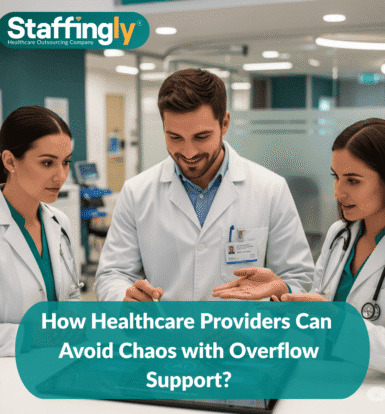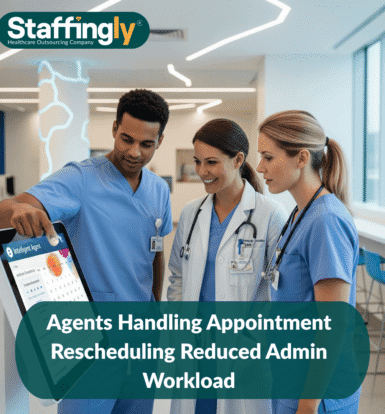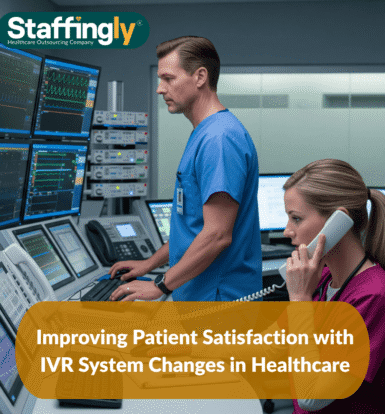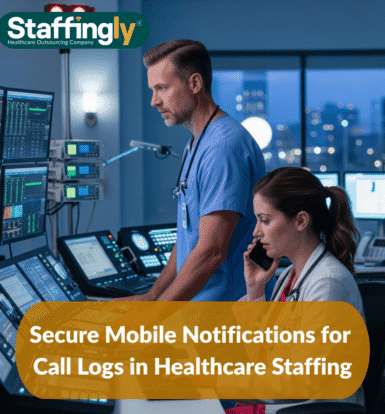On-Demand Outsourcing BPO Services for Healthcare Providers With 24/7 Coverage!
Save up to 70% on staffing costs!
Browse Specialty Staffing Services
How Scalable Systems Keep Healthcare Running During Peak Demand?
In the fast-paced world of healthcare and business, the demand for scalable systems has never been more evident. As organizations experience peak workloads, having the ability to quickly adapt and scale operations is crucial for maintaining service quality. One essential lesson learned by many organizations during peak times is that scalable systems allow for seamless operations, even when the pressure is on. This article explores how scalable systems can ensure consistent performance and how answering staff can adapt without fail

How Fast Escalation Saves Lives in Healthcare Emergencies?
In the healthcare industry, every second counts. Critical situations, especially medical emergencies, demand swift action and clear communication. When an agent receives a distress call, their ability to follow protocol and escalate the issue quickly can mean the difference between life and death. This article explores a real-life example where fast escalation protocols saved a patient’s life and how Staffingly’s healthcare staffing services play a pivotal role in ensuring these life-saving actions are taken promptly. Key Takeaways: In medical emergencies,

How Secure Messaging Enhances Speed and Security in Healthcare?
In today’s healthcare environment, timely communication is crucial. Doctors, nurses, and other healthcare professionals rely on receiving accurate and up-to-date patient information to make the best decisions. However, traditional voicemail systems pose a major challenge due to delays and potential security risks. By switching to app-based secure messaging, healthcare providers can ensure that critical patient information reaches them promptly, securely, and efficiently without the risk of missed or misplaced messages. Key Takeaways: Voicemail systems cause delays, missed messages, and security

How Healthcare Providers Can Avoid Chaos with Overflow Support?
The Panic of Sudden Staff Gaps It’s 9:00 AM. Phones are ringing. Patients are waiting. But your key receptionist is on leave, your back-office staff is out sick, and your operations feel stretched. We’ve all been there whether it’s the holiday season, flu season, or just an unexpected absence, temporary staffing shortages can quickly escalate into full-blown chaos. But what if there was a seamless solution one that required no frantic hiring, no disruption to service, and no drop in

Why Healthcare Practices Need Professional Call Scripts?
The Story of a Practice Transformed Before adopting call scripts, our practice struggled with inconsistency. One staff member greeted callers with warmth and clarity, while another rushed through scheduling with minimal context. Patients reported confusion about insurance, appointment prep, and even clinic hours and these inconsistencies cost us their trust. Staff, too, felt unsure. New hires were thrown into calls without a guide. The lack of structure created stress and mistakes. We didn’t realize it at the time, but our

Improving Patient Satisfaction Through Rescheduling in Healthcare
A New Approach to Managing Appointments In a bustling clinic, scheduling often feels like a never-ending game of phone tag. Cancellations and reschedules flood the system, consuming staff time and leading to a disjointed patient experience. Each manual reschedule takes 8+ minutes, and with up to 25% of appointments canceled weekly, this can total two full staff days per month just to play calendar shuffle. This inefficient model is no longer sustainable. Agent-led appointment rescheduling, powered by trained Virtual Medical

Improving Patient Satisfaction with IVR System Changes in Healthcare
Patient satisfaction often hinges on clear, seamless communication especially when interacting with healthcare providers. Interactive Voice Response (IVR) systems, though essential, can frustrate callers if not carefully managed. When patient feedback identified issues within IVR menus, targeted small adjustments transformed the patient experience dramatically, with Staffingly playing a crucial supporting role. Identifying the Problem: Listening to Patient Feedback Initially, IVR systems were deployed to simplify patient communication, manage call volumes, and improve operational efficiency. However, real-world patient experiences revealed significant

Secure Mobile Notifications for Call Logs in Healthcare Staffing
In today’s fast-paced workplace, seamless and secure access to information isn’t just convenient it’s essential. Consequently, mobile notifications have emerged as a transformative solution, freeing professionals from being tethered to their desktops and enabling immediate, secure access to critical call logs directly on their mobile devices. The Shift from Desktop Dependency For years, organizations relied primarily on desktop-based systems to access, track, and manage call logs, thus keeping workers tied to their desks and limiting their responsiveness. However, as workplace
 Book a Demo to Build Your Team Today!
Book a Demo to Build Your Team Today!


 Read Case Studies
Read Case Studies 



 Virtual Medical Assistants
Virtual Medical Assistants



